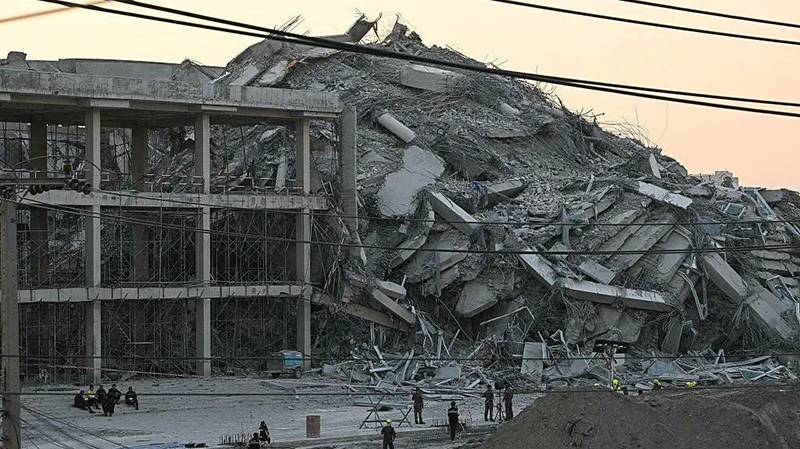The recent 7.7-magnitude earthquake that struck Myanmar on March 28, 2025, sent shockwaves across Southeast Asian. Sadly, a recent collapse of a 30-story building in Bangkok, Thailand, saw many lives lost.
In today's building infrastructure, numerous technological advancements have emerged with the idea to counteract these severe natural disasters. Regretably, despite them becoming more quake-resistant, the disaster exposed the infrastructure's critical vulnerabilities.
The Urgent Need for Earthquake-Resistant Infrastructure
Earthquakes remain an unavoidable natural disaster, posing a continuous challenge for construction firms, developers, and communities. The Myanmar-Thailand earthquake highlights a pressing question:
---How can we mitigate the risk of building collapses during earthquakes, both for existing structures and those under construction?
One of the answers lies in adopting advanced, earthquake-resistant steel structures and rethinking traditional building materials.
Our research shows that to counteract these earthquake-related challenges, we need to use advanced, earthquake-resistant steel structures. There are prefabricated steel products, such as space frames, trusses, and transmission towers, engineered with seismic resilience in mind.
The current technology in steel structures uses high-grade steel alloys that maintain structural integrity under extreme stress and can be durably made to withstand earth rumblings for long years. This is thanks to the complexity in the designs that now have incorporated flexible joints and bracing systems to absorb and dissipate seismic energy, reducing the risk of collapse during earthquakes. At XTD Steel Structures, the steel materials we provide also have anti-corrosion in mind as well, should air vapors seep into integral parts of the building.
Designing your buildings with steel structures technology today with safety in mind is a cost-effective start. You can reduce construction time by up to 20%, lowering labor costs and minimizing downtime—a critical factor in post-disaster recovery scenarios. Additionally, their durability means fewer repairs and replacements over time, saving clients from the recurring expenses seen in regions with inadequate infrastructure. For example, our transmission towers, which support energy distribution networks, are built to withstand seismic forces.
Brick, Concrete, or Steel: Which Is Best for Earthquake Resistance?
Which structure resists earthquakes best: brick, concrete, or steel? Here’s a quick breakdown:
- Brick Structures: Used in low-rise buildings, they’re cost-effective but weak against quakes due to limited strength. It can handle small tremors with proper design but is the least resistant overall.
- Concrete Structures (Shear Walls/ Frames): Rigid and strong for frequent small quakes, but can crack in larger ones if poorly designed. Frames offer some flexibility, though less than steel.
- Steel Structures: Flexible and lightweight, steel absorbs seismic forces by expanding and contracting, reducing collapse risk. Ideal for quakes but needs fireproofing and wind resistance measures.
Verdict: Steel > shear wall ≥ frame > brick under ideal conditions. For best results, combine steel with a frame-shear wall system in mid-rise buildings. Good design matters—any structure can be resilient with the right approach.
Beyond Earthquakes: A Holistic Approach to Disaster Resilience
Earthquake resistance is just one piece of the puzzle. Steel structures must also account for other natural disasters, such as strong winds and fires, where their lightweight nature and poor fire resistance can be drawbacks. Wrapping steel in fire-resistant materials or integrating it with concrete can mitigate these risks. Additionally, preventing secondary disasters—like environmental damage or chain reactions from collapsed infrastructure—is crucial. For example, ensuring energy distribution networks remain operational through seismically resilient transmission towers can prevent widespread outages and aid recovery efforts.
Contact us today for a free consultation! We want to make sure that you're investing in safety, quality, reliability, and cost-effective decisions.
